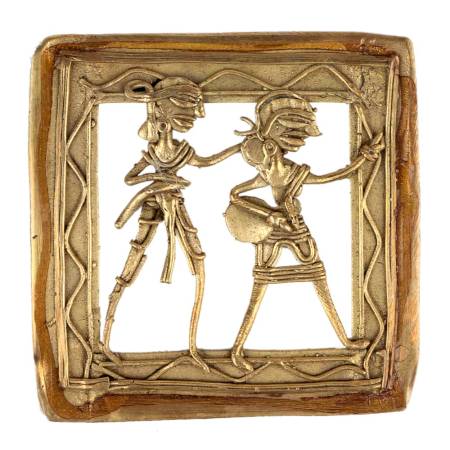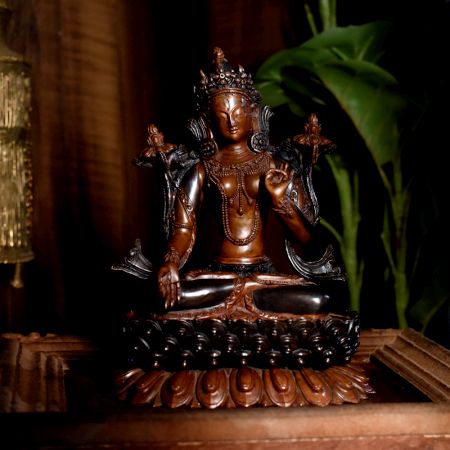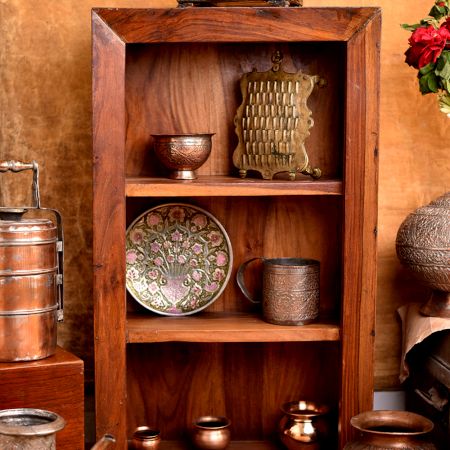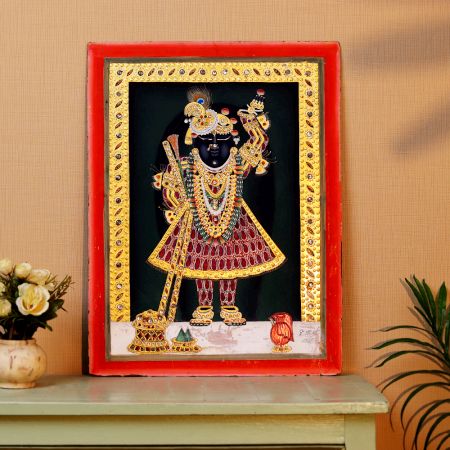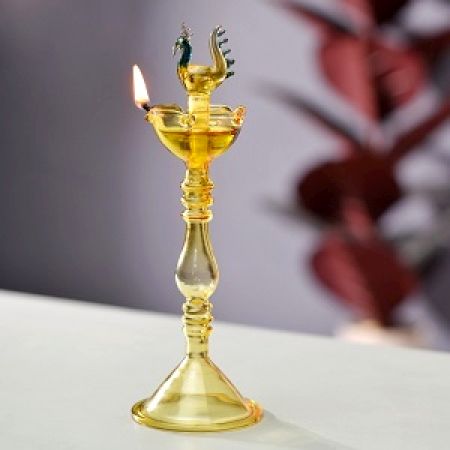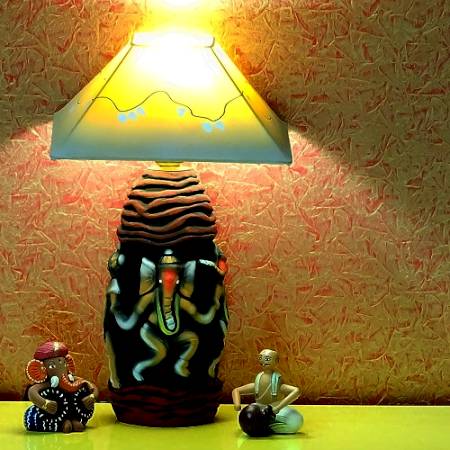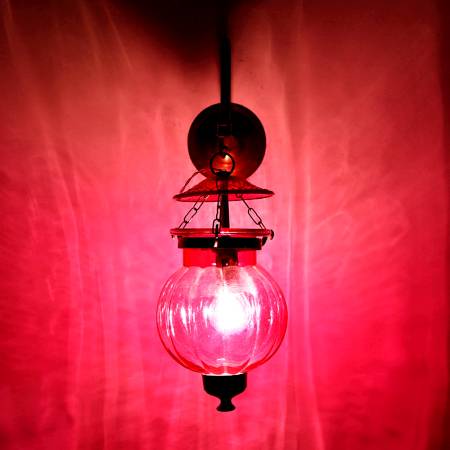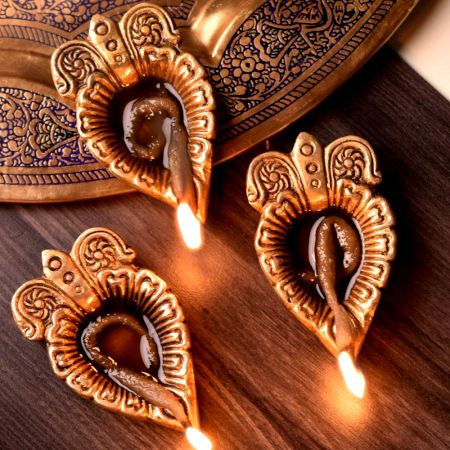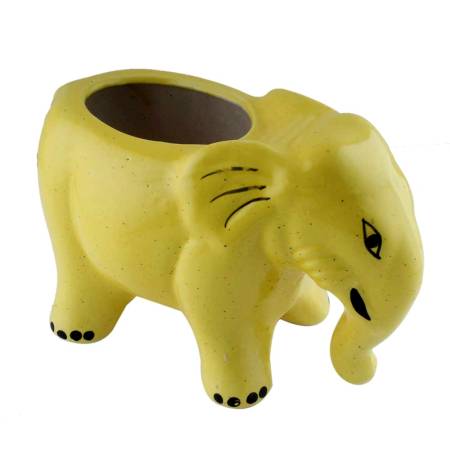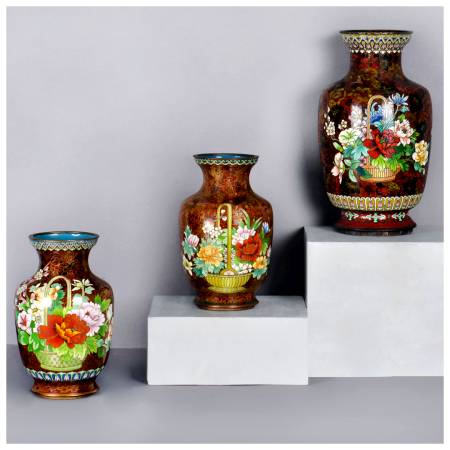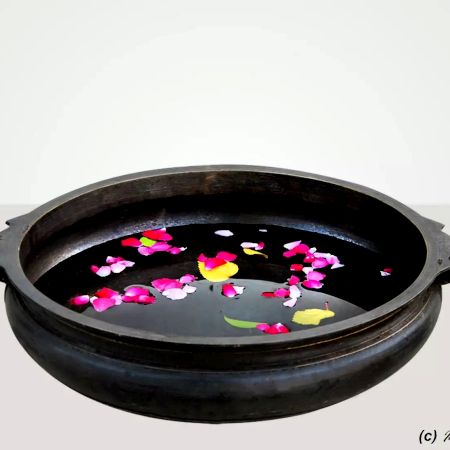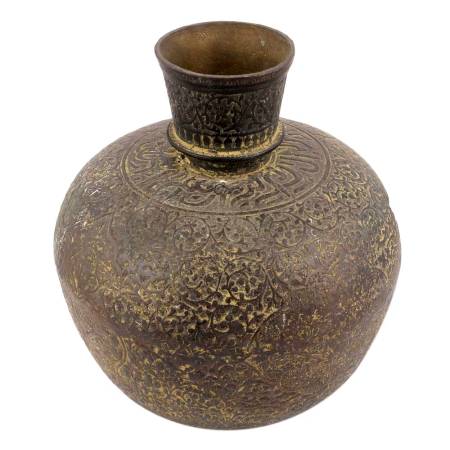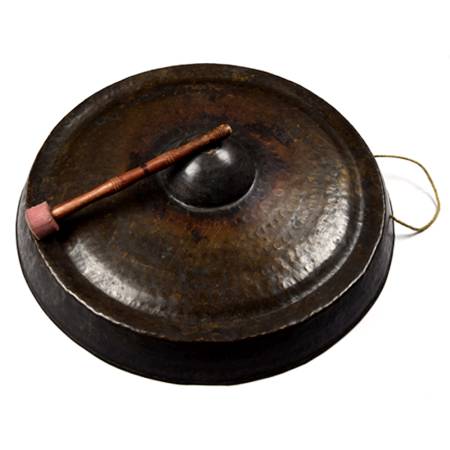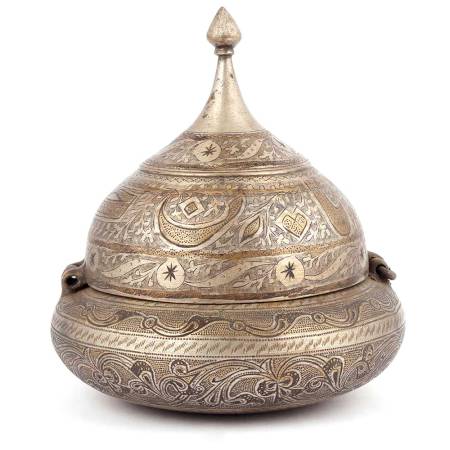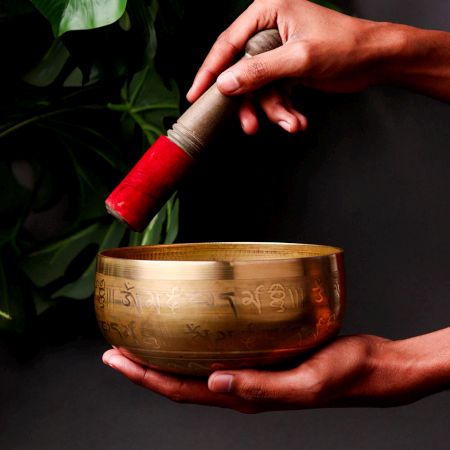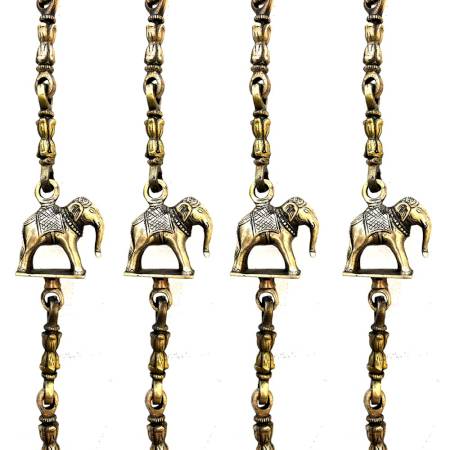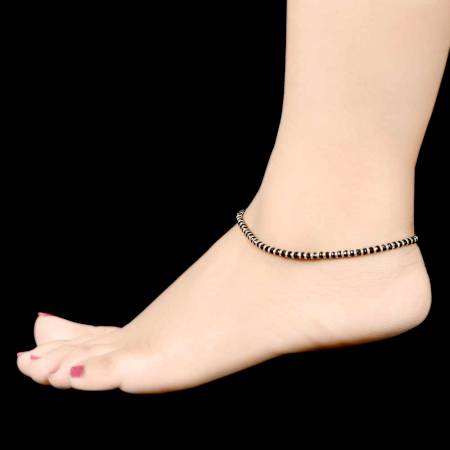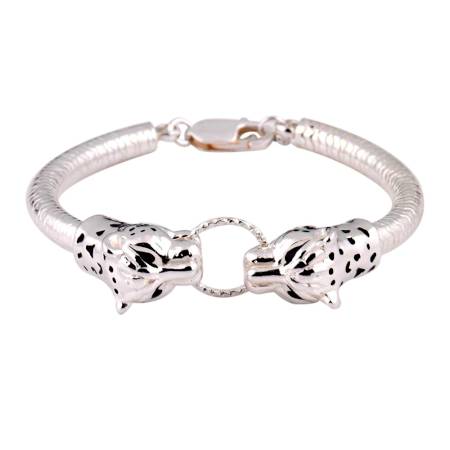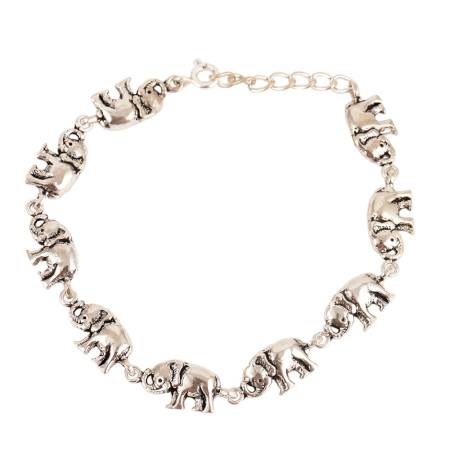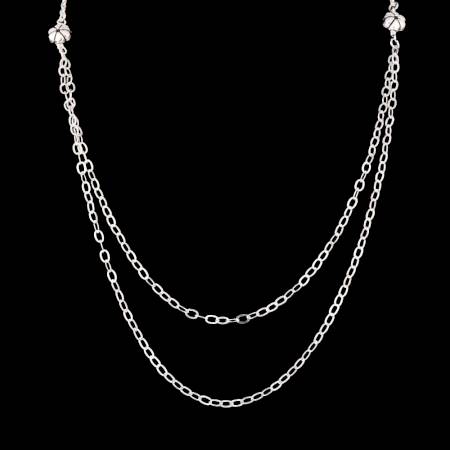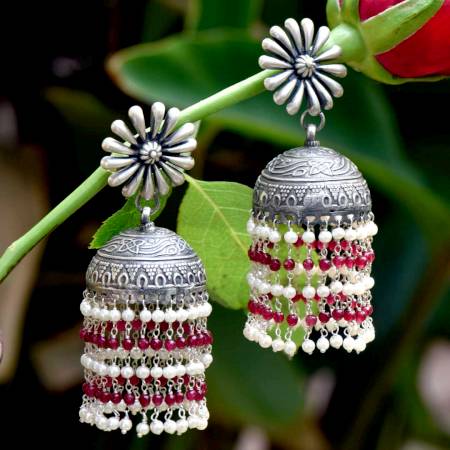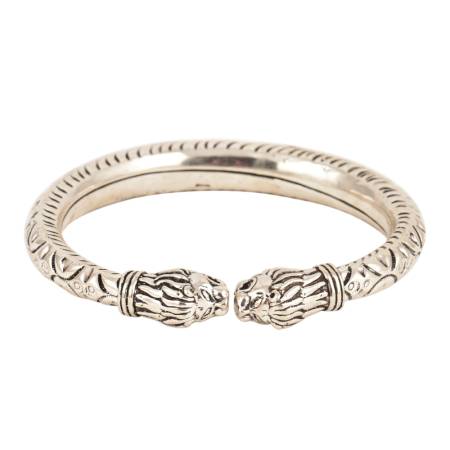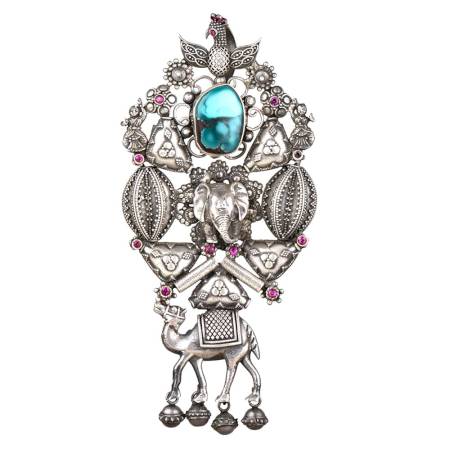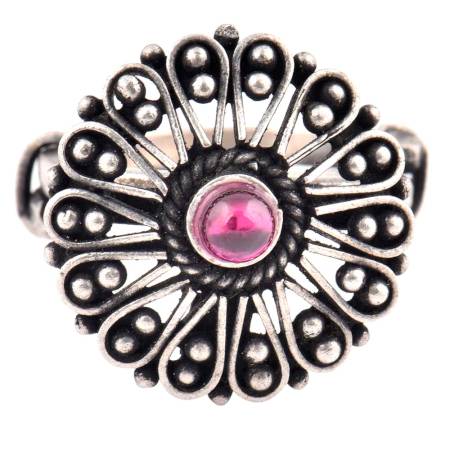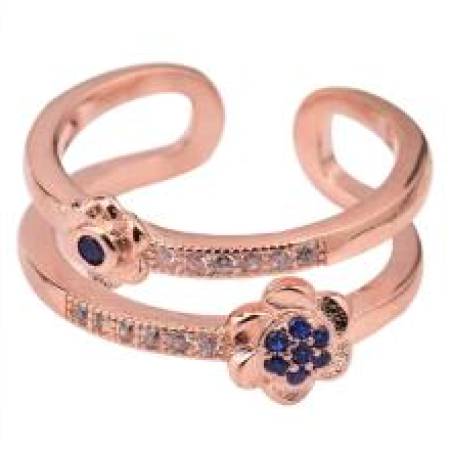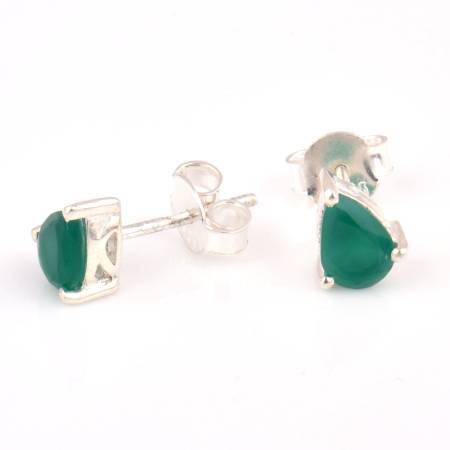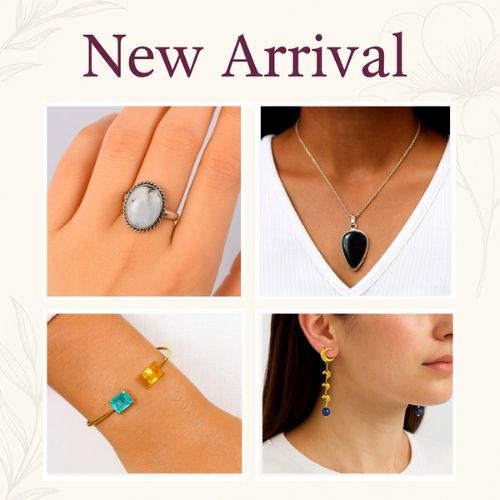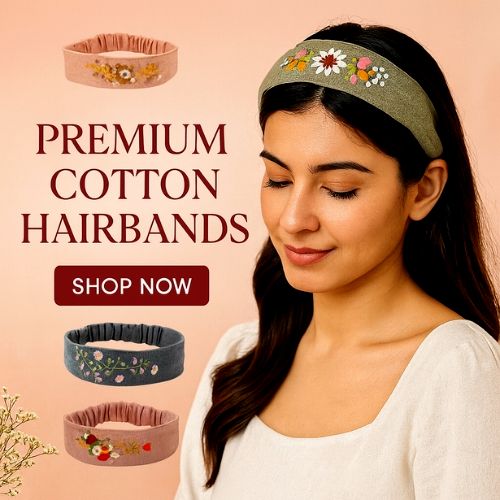-
92.5 Sterling Silver Pendant Long Teardrop Shaped Blue Tourmaline Gemstone Pendant
- ₹ 2,293.51
-
Only a few left
-
92.5 Sterling Silver Pendant Marquise Shaped Blue Tourmaline Gemstone Pendant
- ₹ 2,732.38
-
Only a few left
-
92.5 Sterling Silver Pendant Big Oval Shaped Amethyst Rope Design Pendant
- ₹ 3,204.30
-
Only a few left
-
92.5 Sterling Silver Red Carnelian Pendant Marquise Delicate Wedding Gift
- ₹ 2,732.38
-
Only a few left
-
92.5 Sterling Silver Pendant Long Teardrop Shaped Blue Turquoise Gemstone Pendant
- ₹ 2,293.51
-
Only a few left
-
92.5 Sterling Silver Pendant Round And Square Tiered Blue Turquoise Stone
- ₹ 2,293.51
-
Only a few left
-
92.5 Sterling Silver Pendant Oval Shaped Blue Tourmaline Gemstone Pendant
- ₹ 2,732.38
-
Only a few left
-
92.5 Sterling Silver Pendant Oval Designer Blue Tourmaline Gemstone Pendant
- ₹ 1,821.58
-
Only a few left
-
92.5 Sterling Silver Earrings Glowing Big Oval Shaped Labradorite Gemstone Pendant
- ₹ 2,732.38
-
Only a few left
-
92.5 Sterling Silver Earrings Glowing Round Shaped Labradorite Gemstone Pendant
- ₹ 1,821.58
-
Only a few left
-
92.5 Sterling Silver Pendant Labradorite Semi Precious Stone Engraved Border
- ₹ 2,732.38
-
Only a few left
-
Handcrafted 92.5 Sterling Silver Pendant with Teardrop Shaped Tiger Eye Stone
- ₹ 2,086.54
-
Only a few left
-
92.5 Sterling Silver Pendant Natural Black Jasper Pear Semi Precious Stone
- ₹ 2,293.51
-
Only a few left
-
92.5 Sterling Silver Green Onyx Pendant Oval Shape Traditional Bezel Setting
- ₹ 1,655.98
-
Only a few left
-
92.5 Sterling Silver Pendant Round Cut Stone Green Onyx Round Engraved Border
- ₹ 2,086.54
-
Only a few left
-
92.5 Sterling Silver Earrings Glowing Big Teardrop Shaped Labradorite Gemstone Pendan...
- ₹ 2,293.51
-
Only a few left
-
92.5 Sterling Silver Pendent Green Malachite With Traditional Border Design
- ₹ 2,086.54
-
Only a few left
-
92.5 Sterling Silver Tiger Eye Pendant Statement Jewelry Oval Stone Designer Pendant
- ₹ 1,655.98
-
Only a few left
-
92.5 Sterling Silver Pendant Big Tear Drop Red Spinel Studded Silver Pendant
- ₹ 2,732.38
-
Only a few left
Explore Designer Silver Pendants – Crafted for Every Story
General Understanding of Silver Pendants
A silver pendant is more than a piece of jewelry; it is a miniature expression of art, history, and personal narrative. Typically crafted from sterling silver, it hangs from a chain or cord, resting close to the heart. Pendants range from minimalist geometric forms to intricate filigree and sculpted motifs inspired by cultural stories. Their appeal lies in the versatility, one can be understated or bold, symbolic or ornamental. Beyond adornment, silver pendants often serve as talismans, marking milestones, traditions, or beliefs. They act as small, wearable chronicles that blend style, sentiment, and heritage seamlessly.
What Emotions Or Meanings Do Silver Pendants Convey?
Silver pendants carry nuanced emotions, often reflecting love, protection, or personal milestones. A delicate heart pendant may symbolize intimate bonds, while an engraved charm can capture memory or spiritual resonance. Across cultures, silver is associated with clarity, purity, and emotional balance, amplifying the pendant’s sentiment. Wearing a silver pendant often signifies refinement and subtle sophistication, offering a tactile reminder of personal values or connections. Beyond aesthetic appeal, these ornaments evoke nostalgia, pride, or protection, acting as silent storytellers. The interplay of metal, design, and motif allows each pendant to communicate feelings in a deeply personal, visual language.
What Are The Most Popular Styles In Silver Pendants?
Silver pendants embrace diverse styles, each reflecting cultural and personal tastes. Traditional filigree and repoussé motifs showcase meticulous handcraft, while modern minimalist designs favor geometric shapes and sleek surfaces. Nature-inspired pendants, leaves, feathers, and animals blend symbolism with artistry. Religious and spiritual icons remain enduringly popular, offering both aesthetic and devotional resonance. Gemstone-accented pendants introduce color and symbolic meaning, while engraved or monogrammed designs carry personal narratives. These styles often merge, creating hybrid forms that honor heritage yet align with contemporary fashion sensibilities. Collectors and enthusiasts appreciate the versatility and storytelling potential inherent in these designs.
Why Are Silver Pendants Cherished In Modern Fashion?
In contemporary fashion, silver pendants offer versatility and timeless elegance. Their subtle shimmer complements casual wear and evening attire alike. Unlike gold or platinum, silver conveys understated sophistication, accessible to a broader audience without compromising style. Designers experiment with textures, forms, and motifs, allowing pendants to bridge traditional symbolism with avant-garde aesthetics. Their lightweight nature encourages layering, creating personalized narratives and visual complexity. Beyond visual appeal, silver’s hypoallergenic properties make it a practical choice. These attributes, combined with cultural symbolism and enduring craft, have cemented silver pendants as essential wardrobe statements for those seeking both beauty and personal expression.
How Has Silver Jewelry Evolved Through The Ages?
Silver jewelry has traversed civilizations, reflecting artistic, religious, and societal shifts. Ancient civilizations, from Mesopotamia to the Indus Valley, prized silver for its luster and malleability, crafting amulets, coins, and ceremonial ornaments. In the medieval period, intricate filigree and gemstone settings became prevalent, marking status and devotion. The Renaissance introduced ornate symbolism and allegorical motifs, while contemporary artisans merge traditional techniques with modern minimalism. Innovations in alloying and finishing expanded durability and design possibilities. Throughout history, silver pendants have remained culturally adaptive, embodying technological progress, aesthetic trends, and human sentiment, while retaining their intrinsic value as objects of beauty and symbolism.
What Symbolism Is Associated With Wearing Silver?
Silver is widely associated with moonlit intuition, emotional clarity, and spiritual protection. Across cultures, it represents balance, reflection, and feminine energy. In jewelry, wearing silver often signals refinement, purity, and personal mindfulness. Symbolic pendants amplify this meaning, stars, moons, and sacred icons reflect cultural or spiritual beliefs. Silver’s natural glow suggests subtlety, patience, and resilience. For many, it becomes a talismanic companion, anchoring emotional or psychological intentions. Beyond superstition, silver embodies historical significance, connecting the wearer to ancestral craft, timeless aesthetics, and enduring human fascination with the reflective, luminous quality of the metal.
Craftsmanship, Materials & Design Techniques
Gemstones and motifs define both the aesthetic and symbolic language of silver pendants. Gemstones introduce color, contrast, and emotional resonance, turquoise for protection, garnet for passion, and moonstone for intuition. Motifs, whether floral, celestial, or mythological, convey stories, beliefs, or personal identity. Together, they create layered meanings, allowing pendants to communicate beyond ornamentation. Artisans carefully select placements, cuts, and textures to harmonize metal and gem, crafting cohesive narratives. In cultural contexts, these combinations serve ritualistic, protective, or celebratory purposes. Each choice transforms a pendant into a talisman, connecting wearer, maker, and heritage in a dialogue of form, color, and significance.
How Does Texture And Finish Define Quality?
Texture and finish reveal both craftsmanship and intent in silver pendants. Polished, mirror-like surfaces suggest modernity and precision, while matte or brushed finishes offer understated elegance and tactile warmth. Granulation, engraving, or hammered patterns showcase artisanal skill and design complexity. In cultural jewelry, surface intricacy conveys historical techniques, distinguishing mass-produced replicas from authentic pieces. The finish also influences perception of value, smooth, consistent surfaces indicate careful alloying and refinement. For collectors, texture provides sensory engagement, inviting touch as part of aesthetic appreciation. Ultimately, finish and texture bridge visual appeal with technical mastery, reinforcing both beauty and authenticity in silver craftsmanship.
What Are The Latest Trends In Silver Pendant Design?
Modern silver pendants reflect a fusion of heritage and innovation. Minimalist geometric shapes coexist with layered, symbolic designs. Nature-inspired motifs, celestial forms, and abstract patterns dominate contemporary trends, often accented with subtle gemstones. Personalization is increasingly popular, monograms, engraved dates, or cultural symbols create bespoke statements. Textural experimentation, combining matte, polished, and oxidized finishes, adds depth and character. Sustainable sourcing and artisan-focused production appeal to conscious buyers. Hybrid techniques, combining 3D printing with hand finishing, expand creative possibilities. These trends respect historical roots while embracing individuality, allowing silver pendants to evolve as both fashion statements and meaningful personal artifacts.
How Do Artisans Combine Traditional And Modern Techniques?
Artisans merge handcraft and technology to create contemporary silver pendants with heritage echoes. Lost-wax casting or filigree forms the base, while CAD modeling enables precise detailing. Oxidation, hammering, and hand polishing preserve artisanal nuance, producing texture impossible in mass production. Gemstone setting combines classical prong or bezel techniques with modern innovations in secure fastening. Cultural motifs are reinterpreted with minimalist or abstract aesthetics, balancing storytelling and visual appeal. This fusion respects historical craftsmanship while meeting modern expectations of durability, comfort, and design versatility. The result is a pendant that feels simultaneously timeless, personal, and stylistically current.
Why Is Sterling Silver Preferred Over Pure Silver In Pendants?
Sterling silver, an alloy of 92.5% silver with copper, offers durability without compromising aesthetic appeal. Pure silver is soft and prone to deformation, unsuitable for daily wear. The alloy allows intricate detailing, reliable structural integrity, and consistent finishing. Sterling’s slight warmth complements gemstones and patinas, enhancing visual depth. It also responds well to polishing, oxidization, and textural techniques, allowing artisans to achieve both subtlety and brilliance. Collectors and wearers value sterling for its longevity, resilience, and ethical sourcing options. In pendants, sterling silver balances function, artistry, and symbolic weight, ensuring the piece retains both beauty and personal significance over time.
Purchase, Gifting & Value of Silver Pendants
A silver pendant is both an aesthetic and financial investment. Its intrinsic value comes from silver’s market price, while craftsmanship and historical significance add intangible worth. Limited editions or artisan-made pieces retain or increase value over time. Cultural motifs, unique designs, or vintage provenance enhance collectability. Beyond monetary aspects, silver pendants carry emotional and personal value, marking milestones or embodying symbolism. Proper care, including storage and periodic polishing, preserves longevity. For investors and enthusiasts, combining metal quality, design distinctiveness, and artisanal integrity ensures the pendant functions as a wearable asset, valuable in both tangible and sentimental dimensions.
Why Are Silver Pendants Perfect Gifts?
Silver pendants embody personal meaning and aesthetic appeal, making them exceptional gifts. Their versatility suits diverse occasions, birthdays, weddings, anniversaries, or religious milestones. Symbolic motifs or engraved initials add emotional resonance, transforming jewelry into a wearable memory. Silver’s hypoallergenic properties and enduring durability make it practical, while stylistic variety ensures alignment with individual tastes. Gifting a pendant conveys thoughtfulness, bridging tradition and contemporary fashion. Its subtle shimmer, cultural undertones, and personalizable nature allow the receiver to carry sentiment daily. Unlike ephemeral gifts, silver pendants combine emotional depth, utility, and visual elegance, creating lasting impressions that transcend fleeting trends.
How To Choose A Silver Pendant For Different Occasions?
Selecting a silver pendant requires consideration of context, attire, and personal symbolism. For formal occasions, sleek minimalist designs complement attire without overpowering. Cultural or festive events favor ornate motifs, filigree, or gemstone-accented pendants reflecting tradition. Personalized pendants, engraved initials, dates, or charms suit intimate gifting. Casual wear encourages versatile, lightweight designs allowing layering. For spiritual or symbolic occasions, motifs like religious icons, talismans, or celestial forms carry significance. Evaluating chain length, pendant size, and metal quality ensures comfort and aesthetic harmony. Understanding the occasion’s emotional and cultural context guides selection, allowing the pendant to resonate both visually and sentimentally.
What Should You Look For When Buying Silver Jewelry Online?
When purchasing online, authenticity and transparency are paramount. Check for hallmark certifications, detailed product descriptions, and metal purity indicators. High-resolution images from multiple angles reveal texture, finish, and craftsmanship. Reputable sellers provide return policies, verified reviews, and clear provenance of design. Compare prices to avoid counterfeit or low-quality alloys. Consider weight, chain compatibility, and gemstone authenticity if applicable. Cultural and stylistic relevance ensures the piece aligns with personal taste. Digital convenience demands diligence, thorough inspection, verified ratings, and reliable shipping safeguard both investment and satisfaction, ensuring the silver pendant embodies quality, aesthetic, and symbolic value.
Are Designer Silver Pendants Worth The Premium?
Designer silver pendants command premiums for originality, craftsmanship, and brand value. Artisans or established brands offer distinctive motifs, limited editions, and meticulous finishing that mass-produced jewelry cannot match. These pendants often feature innovative design, hybrid techniques, and personalized storytelling. While price is higher, value lies in longevity, exclusivity, and cultural resonance. Designer pieces often appreciate over time due to scarcity and historical interest. Beyond financial aspects, ownership conveys refinement, artistic appreciation, and connection to skilled craftsmanship. For collectors and connoisseurs, the premium ensures both tangible quality and intangible significance, elevating a silver pendant from accessory to curated artifact.
Care, Maintenance & Preservation of Silver Pendants
Maintaining the glow of a silver pendant requires attentiveness and a gentle routine. Regular cleaning prevents oxidation from tarnishing and dullness. Simple wiping with a soft, lint-free cloth restores subtle brilliance. Occasional exposure to mild silver polish brings back a deeper shine, highlighting intricate patterns and textures. Avoid harsh chemicals, perfumes, or abrasive surfaces that strip the metal’s natural luster. Storing pendants in anti-tarnish pouches or cloth keeps air and moisture at bay. Over time, this care ensures a pendant remains both visually striking and symbolically vibrant, preserving its elegance as a wearable heirloom or a personal talisman.
Can Tarnished Silver Pendants Be Restored?
Tarnished silver pendants can be carefully restored to near-original brilliance. Mild cleaning solutions, often containing baking soda or gentle silver polish, remove oxidized layers. Warm water combined with soft brushing can lift residues from filigree or engraved surfaces. Some designs benefit from professional ultrasonic cleaning, which penetrates detailed motifs without harming the pendant. Restoration depends on the degree of tarnish, type of alloy, and presence of gemstones, as some stones react poorly to chemicals. Proper restoration revives both shine and texture while maintaining integrity. Regular upkeep afterward prolongs results, allowing the pendant to retain its aesthetic and cultural significance for decades.
What Are Common Causes Of Silver Dulling?
Silver loses its luster due to chemical reactions and environmental exposure. Sulfur in the air, moisture, and direct contact with cosmetics or sweat triggers oxidation, leaving a darkened surface. Even minimal friction from clothing or storage can subtly wear textures and polish. Poorly maintained cleaning methods, including abrasive cloths or chemicals, accelerate dulling. Alloys in sterling silver may react differently, causing uneven toning. Cultural practices, such as frequent wearing or exposure to incense, also affect shine. Awareness of these causes enables preventive care. By understanding environmental and material factors, wearers can retain the pendant’s visual impact and preserve its personal or symbolic resonance.
How Should Silver Pendants Be Stored Safely?
Proper storage protects silver pendants from damage and tarnish. Anti-tarnish pouches, soft cloth bags, or lined jewelry boxes isolate silver from air, moisture, and other metals. Avoid overcrowding, as friction between pieces can scratch delicate patterns. Storing pendants with silica packs reduces humidity exposure, extending longevity. For long-term preservation, keep pendants away from direct sunlight or heat, which can affect both metal and gemstones. Storing thoughtfully allows the pendant to maintain its reflective qualities, ensuring that heritage motifs, personal engravings, and detailed craftsmanship remain intact, making each piece a durable and emotionally significant treasure.
What Natural Methods Can Be Used For Cleaning Silver?
Natural cleaning methods restore silver pendants without harsh chemicals. Baking soda mixed with water forms a gentle paste, ideal for removing tarnish while preserving details. Lemon juice and salt create a mild acidic solution, brightening surfaces when used briefly. Aluminum foil baths with warm water create a chemical reaction that lifts oxidation. Soft cloths or brushes prevent scratches on intricate filigree. These methods respect both material and design, allowing pendants to shine without losing their handcrafted texture. Natural approaches also align with eco-conscious practices, ensuring longevity, aesthetic brilliance, and cultural respect for traditional metalwork techniques.
When Should You Seek Professional Polishing Services?
Professional polishing is advisable for heavily tarnished, intricate, or gemstone-adorned pendants. Experts employ ultrasonic cleaning, steam, or controlled polishing that preserves delicate textures and motifs. Certain finishes, oxidized details, or inlays require specialized care that cannot be safely replicated at home. Engraved or antique pieces especially benefit from professional attention, maintaining historical authenticity while restoring brilliance. Regular professional care every few years ensures structural integrity, prevents metal thinning, and revitalizes aesthetic appeal. This balance between personal maintenance and expert intervention prolongs both the pendant’s physical life and its emotional significance, allowing it to remain a cherished symbol for generations.
Styling & Personal Expression With Silver Pendants
Silver pendants pair effortlessly with diverse outfits. Crisp whites and deep blues amplify the reflective qualities of silver, while neutral tones create understated sophistication. Minimalist pendants suit modern silhouettes, tailoring, or casual tees, offering subtle elegance. Ornate or cultural designs resonate with traditional attire or festive ensembles, blending symbolism with fashion. Layered pendants enhance bohemian or contemporary looks, creating visual depth. The key lies in proportion, letting the pendant harmonize rather than compete. With careful styling, silver pendants act as anchors, connecting clothing, personal expression, and cultural storytelling in a cohesive visual narrative.
How Do You Choose A Pendant That Reflects You?
Selecting a pendant involves both aesthetic sensibility and personal symbolism. Consider motifs, shapes, or inscriptions that resonate with heritage, beliefs, or emotional milestones. Minimalist designs suggest modern sophistication, while traditional or gemstone-accented pieces convey cultural depth. Evaluate scale relative to frame and attire, ensuring harmony. A pendant should feel like an extension of self, representing personality, spirituality, or memory. By prioritizing symbolic and stylistic alignment, the pendant becomes more than decoration; it transforms into a personal artifact, articulating identity subtly yet powerfully in daily life or special occasions.
How To Layer Silver Pendants For A Modern Look?
Layering pendants creates depth, storytelling, and modern sophistication. Varying chain lengths, textures, and pendant sizes builds dynamic visual flow. Combine minimalist pieces with textured or symbolic designs to balance subtlety with narrative. Attention to proportion prevents visual clutter, while overlapping motifs suggest curated personal expression. Layering can bridge contemporary style with heritage-inspired designs, giving each pendant a moment of resonance. This approach encourages experimentation, allowing individuals to craft signature looks that shift with context, mood, or attire, turning silver into a versatile medium for style and self-expression.
Can Silver Pendants Be Paired With Other Metals?
Yes, silver pendants can harmonize with other metals, creating contrast and layered richness. Gold or rose gold chains highlight silver’s cool tones, while oxidized finishes blend subtly with darker metals. Mixed-metal styling emphasizes texture, design, and personal narrative, allowing pendants to complement eclectic jewelry collections. Careful balance prevents visual conflict; pairing requires attention to proportion and finish. Cultural jewelry practices often combine metals, demonstrating historical precedent for such blends. Thoughtful mixing enhances modern styling while respecting the pendant’s intrinsic elegance and symbolic resonance.
What Jewelry Trends Highlight The Beauty Of Silver Pendants?
Current trends emphasize personalization, minimalism, and layering. Stacking delicate silver pendants or pairing them with natural gemstones enhances individuality. Nature-inspired or geometric motifs resonate with contemporary aesthetics while preserving craftsmanship. Oxidized finishes, matte textures, and hammered surfaces emphasize artisanal quality. Fashion-forward styling favors combining traditional symbolism with modern forms, bridging heritage with wearable art. Sustainability and artisan-driven production have elevated ethically sourced silver. Trends highlight the metal’s versatility, allowing it to convey subtlety, narrative, and cultural resonance while remaining a staple in contemporary jewelry wardrobes.
Cultural Legacy & Timeless Appeal of Silver Pendants
Cultures have profoundly shaped silver pendant design through motifs, symbolism, and technique. Indian filigree, Celtic knotwork, and Native American symbolism each embed stories, spirituality, and local aesthetics. Religious, cosmic, and natural imagery reflect cultural belief systems, while crafting methods preserve artisanal heritage. Cultural rituals, festivals, and ceremonial uses inspired specific forms, textures, and finishes. Contemporary designers often reinterpret these motifs, bridging tradition with modern sensibilities. By studying cultural influences, wearers and collectors understand the layers of meaning embedded in silver pendants, appreciating them as narrative vessels rather than mere adornment.
What Role Did Silver Play In Ancient Traditions?
Silver served as currency, ornament, and talisman in ancient rituals. It symbolized purity, lunar energy, and protection against negative forces. In India, pendants accompanied religious ceremonies and life milestones, while in Europe, silver amulets safeguarded travelers. The metal’s reflective quality was linked to spiritual clarity, acting as a mediator between physical and metaphysical realms. Silver’s role extended beyond decoration, functioning as a conduit for blessings, status, and cultural storytelling. Understanding this heritage reveals why modern pendants carry symbolic weight, combining material value with spiritual, emotional, and aesthetic resonance.
Which Civilizations Popularized Silver Adornments?
Civilizations such as the Egyptians, Greeks, Romans, and Indians championed silver jewelry. Egyptians valued it for ritual and status, while Greeks and Romans embraced artistic motifs and gemstone settings. Indian artisans developed intricate filigree and repoussé techniques, embedding cultural and religious narratives. Each civilization adapted silver to local aesthetics, materials, and symbolism, spreading its appeal globally. Silver pendants became markers of identity, spiritual devotion, and artistic expression. Historical patronage, ritual significance, and evolving craft ensured silver’s prominence in adornment across continents. These traditions inform contemporary designs, merging global heritage with modern wearable art.
How Does Silver Reflect Spiritual And Cultural Identity?
Silver embodies spiritual purity, protection, and cultural storytelling. Motifs, inscriptions, and gemstones communicate belief, heritage, and personal milestones. Lunar associations symbolize reflection, clarity, and feminine energy across cultures. Wearing silver becomes a visual narrative, connecting the individual to traditions, rituals, or ancestral craftsmanship. Beyond aesthetics, silver mediates personal and cultural identity, conveying subtlety, refinement, and continuity. Its enduring appeal arises from both material beauty and symbolic resonance, making pendants vessels of cultural memory, spiritual reflection, and emotional expression.
Why Do Silver Pendants Remain Symbols Of Purity And Grace?
Silver’s reflective sheen evokes clarity, serenity, and timeless elegance. Historically, its association with the moon, spiritual rituals, and purity reinforced symbolic significance. Cultural motifs, filigree craftsmanship, and delicate finishing enhance aesthetic grace. Its versatility in design allows layering, personalization, and contemporary reinterpretation while maintaining symbolic continuity. Silver pendants are heirlooms, talismans, and fashion statements simultaneously, bridging material beauty with emotional and cultural depth. This timeless resonance ensures that silver continues to signify purity, sophistication, and grace across generations, making it an enduring favorite in personal adornment and cultural expression.
Modern Adaptations & Sustainable Crafting
Contemporary designers reinterpret silver jewelry by blending heritage motifs with minimalist aesthetics, transforming traditional pendants into versatile statement pieces. Experimentation with geometric shapes, asymmetry, and mixed metals adds a dynamic, modern edge. Some artisans draw inspiration from architectural forms or nature, embedding narrative and symbolism into wearable art. Innovations in engraving, texturing, and finishing allow silver to reflect personal identity while retaining craftsmanship integrity. Modern reinvention bridges historical legacy with present-day style sensibilities, ensuring silver pendants appeal to both collectors and fashion-conscious audiences. The fusion of old and new invigorates silver jewelry with relevance, emotional resonance, and aesthetic allure.
What Role Does Sustainability Play In Silver Crafting?
Sustainability has become a guiding principle in silver crafting, influencing sourcing, production, and design philosophy. Ethical mining practices, reduced chemical use, and responsible disposal of residues preserve environmental and cultural integrity. Artisans increasingly favor recycled silver, minimizing ecological impact while honoring the metal’s legacy. Sustainable crafting encourages slow, mindful production over mass manufacturing, allowing for higher-quality, detailed work. Consumers increasingly value transparency, knowing their jewelry respects both human labor and natural resources. Sustainability transforms silver pendants into more than adornments, they become symbols of environmental consciousness, cultural respect, and ethical commitment, aligning material beauty with modern values of responsibility and mindfulness.
How Is Recycled Silver Used In Pendant Making?
Recycled silver serves as the cornerstone of environmentally conscious pendant design. Artisans melt and repurpose silver from old jewelry, industrial scraps, or unused coins, preserving precious metal while reducing mining demand. Recycled silver maintains identical properties to new silver, allowing for complex texturing, engraving, or stone setting. The process honors circular economy principles, connecting past and present materials into fresh expressions of craft. Using recycled silver also embeds narrative significance, as every piece carries layers of history and previous life. Consumers appreciate the fusion of sustainability, aesthetics, and cultural resonance, making recycled silver pendants both ethically meaningful and visually compelling.
Why Are Consumers Choosing Ethical Silver Jewelry?
Ethical silver jewelry resonates with consumers seeking integrity, sustainability, and cultural mindfulness. Awareness of mining conditions, labor practices, and environmental impact informs modern purchasing decisions. Ethical pieces often come with certification, recycled sourcing, or artisan acknowledgment, creating a transparent narrative around each pendant. Consumers value not only aesthetic beauty but also the story embedded in the material, heritage, craftsmanship, and environmental responsibility. By choosing ethical silver, wearers participate in a broader cultural dialogue, promoting sustainability, respect for artisans, and conscious consumption. Jewelry becomes a statement of personal values, bridging beauty with purpose, and elevating silver pendants beyond mere ornamentation.
How Technology Shapes The Future Of Silver Artistry?
Technology empowers silver artistry by enabling precision, efficiency, and innovation. Computer-aided design CAD allows complex geometries, intricate filigree, and repeatable patterns while preserving artisan creativity. Laser engraving, 3D printing, and advanced casting techniques expand design possibilities without compromising traditional craftsmanship. Technology also facilitates sustainable practices, minimizing waste and optimizing recycled silver use. Digital platforms showcase designs globally, connecting artisans to international markets while promoting cultural exchange. The fusion of technology and handcrafting ensures silver pendants evolve with contemporary aesthetics, offering wearers both exquisite design and narrative depth. Modern silver artistry thrives at the intersection of heritage, innovation, and ethical responsibility.
Frequently Asked Questions (FAQs)
What Defines A Pendant As Silver?
A silver pendant is defined by its composition, craftsmanship, and visual properties. It primarily contains silver, either in pure form or as sterling silver, typically 92.5% silver with 7.5% alloy for durability. Authentic silver exhibits reflective brilliance, cool metallic sheen, and resistance to corrosion when properly cared for. Craftsmanship often includes detailed engraving, motifs, filigree work, or gemstone settings, distinguishing pendants from generic metal ornaments. Verification methods include hallmark stamps, acid testing, and reputable sourcing. A true silver pendant blends material integrity, artistry, and historical resonance, ensuring both aesthetic appeal and cultural value while serving as a durable, meaningful piece of personal adornment.
Can Silver Pendants Tarnish Over Time?
Yes, silver pendants can tarnish due to chemical reactions with sulfur, moisture, or environmental pollutants. Tarnishing creates a darkened or dull surface, often affecting intricate textures and finishes. Regular cleaning with soft cloths, mild polish, or natural remedies like baking soda restores brilliance. Proper storage, such as anti-tarnish pouches or humidity-controlled boxes, reduces oxidation. Certain finishes or mixed alloys may experience uneven toning, requiring careful maintenance. Tarnish does not compromise structural integrity and can be treated without harming gemstones or motifs. Awareness of environmental factors, wear habits, and maintenance practices ensures long-lasting beauty and symbolic resonance in silver pendants.
Are Silver Pendants Hypoallergenic?
Silver pendants, particularly sterling silver, are generally hypoallergenic, containing minimal nickel or irritants. The 92.5% silver composition reduces risk of skin reactions, making it suitable for sensitive skin. Some alloys or lower-quality metals mixed with silver may provoke allergies, so hallmark verification is essential. Proper care, such as cleaning residues of sweat or cosmetics, further prevents irritation. Hypoallergenic properties make silver pendants ideal for daily wear, long-term use, and layering with other jewelry. Consumers seeking comfort, durability, and aesthetic elegance often prefer sterling silver pendants, which harmonize safety with heritage, craftsmanship, and personal style.
How Can I Ensure Authenticity While Buying?
Authenticity in silver pendants requires attention to hallmarking, sourcing, and craftsmanship. Reputable sellers provide verified stamps, such as 925 for sterling silver. Transparent documentation or certification enhances trust, particularly for designer or artisan pieces. Physical inspection for consistent color, weight, texture, and engraving quality helps detect authenticity. Awareness of recycled versus synthetic silver practices can inform sustainable, ethical choices. Purchasing from trusted artisans, heritage jewelers, or verified online platforms minimizes risk of counterfeit products. Authenticity ensures aesthetic brilliance, durability, and cultural resonance, transforming the pendant from mere ornament into a meaningful artifact reflecting heritage, quality, and ethical integrity.
Can Traditional Silver Designs Suit Modern Fashion?
Traditional silver designs translate beautifully into modern fashion through thoughtful styling. Filigree, repoussé, or cultural motifs can be paired with minimalist attire, contemporary layering, or mixed metals for visual harmony. The contrast between heritage detailing and modern silhouettes emphasizes craftsmanship while preserving symbolic value. Many designers reinterpret traditional motifs into smaller, wearable pendants, balancing historical resonance with practicality. Wearing traditional silver in contemporary settings allows cultural storytelling, personal expression, and stylistic versatility. Pendants thus act as bridges between past and present, harmonizing aesthetic sophistication with emotional and cultural depth, making them timeless yet relevant in modern wardrobes.
What Makes Sterling Silver Ideal For Daily Wear?
Sterling silver combines beauty, durability, and practicality, making it ideal for daily wear. The 92.5% silver alloy ensures strength, reducing risk of bending, scratching, or breaking while maintaining reflective brilliance. Its hypoallergenic composition suits sensitive skin, allowing comfort over extended periods. Versatile in design, sterling silver accommodates engraving, texturing, and gemstone settings without compromising resilience. Proper maintenance, including gentle cleaning and safe storage, preserves shine and cultural symbolism. Daily wear transforms sterling silver pendants into personal artifacts, combining functional elegance with aesthetic sophistication and emotional significance, bridging fashion, heritage, and meaningful expression in a single enduring piece.
